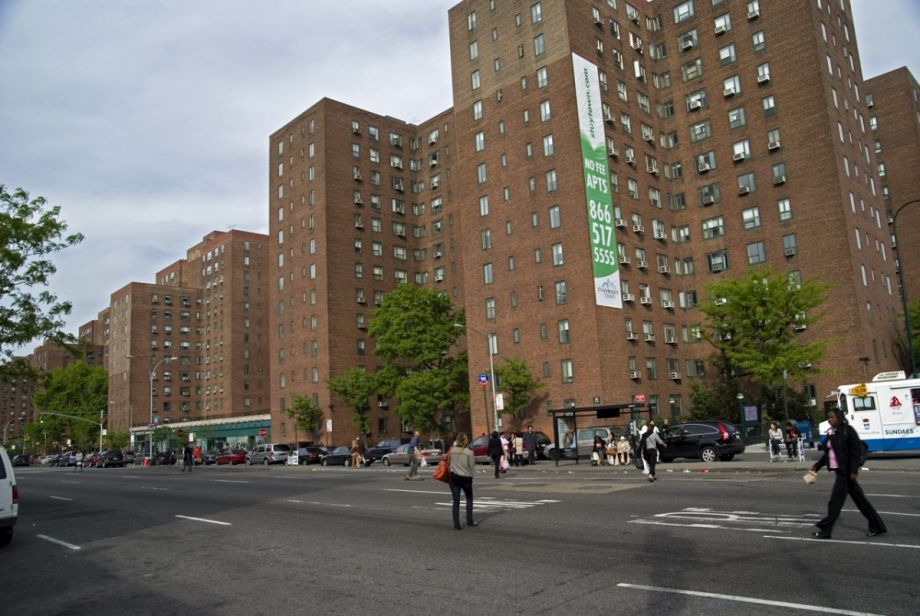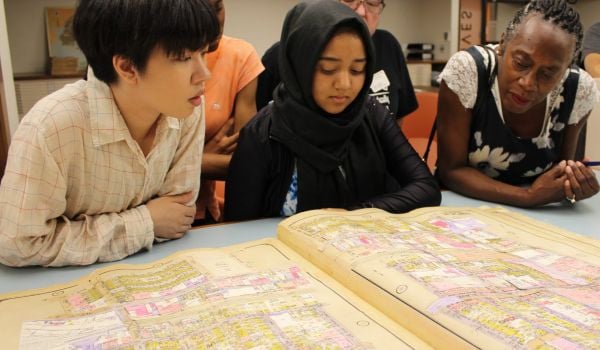One can be excused if they confuse the title of Brown University historian Samuel Zipp’s latest book, Manhattan Projects, for another historiography of the legendary effort to build the first atomic bomb. However, Zipp’s book has nothing to do with the atomic bomb—unless of course one is willing to consider whether urban renewal, the book’s focus, if not its main character, was an atomic bomb of sorts that forever altered urban planning after the cold-war. In Manhattan Projects: The Rise and Fall of Urban Renewal in Cold War New York (Oxford University Press, 34.95), Zipp produces a compelling account of the immense transformation that took place on Manhattan island in the aftermath of World War II. Using four postwar “Manhattan Projects” as his anchors: The United Nations; Met Life’s Stuyvesant Town; Lincoln Center and the New York City Housing Authority’s East Harlem housing complexes, Zipp posits that “two seemingly disparate developments—the rise of a world city and the decline into urban crisis—were coterminous and mutually dependent…[Thus] urban renewal was at the heart of this transformation, remaking the very space of the city as it gave rise to the upheavals at the root of the city’s power and shame.”
Manhattan Projects is not another retelling of battles between Robert Moses and Jane Jacobs. Moses is no doubt a recurring figure in this book because it is impossible to discuss urban planning in twentieth century New York without discussing him. However, Zipp manages to temper Moses’ influence by adhering to the “greatest fact of postwar American life,” that “unprecedented economic prosperity” was the veritable engine behind this era’s Urban Renewal experiments. With its cash on-hand, New York was able to undertake these four seminal “Manhattan Projects,” each of which was to play a pivotal role in the city’s quest to assert itself as the world capital.
Those familiar with Zipp’s work will recognize him as an expert on Stuyvesant Town. Writing in the New York Times in 2006 on the occasion of Stuyvesant Town’s upcoming sale Zipp declared: “Having begun its life as the state-of-the-art method for supplanting working-class neighborhoods with middle-class apartment towers and white-collar institutions, Stuyvesant Town will end up as a victim of a newer, less abrupt and violent version of the very forces of urban change it helped unleash more than 50 years ago.” In Manhattan Projects Zipp expands on this thesis to show how Met Life’s “suburb in the city” was never intended as a rent-controlled utopia, but rather that it was a unique marriage of corporate and government interests. It was not altruism that inspired Met Life to create Stuyvesant Town, but rather the firm’s belief that it could shore up its bottom line by creating a space where “white, middle class family life” could flourish within the city. Zipp contends that Met Life succeeded in bringing its “suburb in the city to life” because its vision for its personal Manhattan cul-de-sac was in line with the city’s own desires to become a white-collar hamlet. Already the financial capital of the world, New York saw a singular opportunity to secure its white-collar street cred by winning the coveted United Nations building contract, a project which as Zipps informs us, that were it not for a last minute intervention by the Rockefeller family, could have very well landed in Philadelphia.
Building on essayist E.B. White’s assessment that the UN was a housing project for “governments,” Zipp uses the UN’s development as a case study to illuminate the nuances of Urban Renewal’s vexed history as a panacea to pre-WWII public health concerns derived from expansive industrialization and a method for modernizing and diversifying New York’s architectural landscape: “Not only would the city-rebuilding ethic clear slums, rehouse the poor, and attract new users to the city center, but it would also new urban form that would give all of Manhattan a profile equal to its title as capital of the world.”
As with the other “Manhattan Projects” that Zipp explores, the symbolic interpretations of the UN were often no-match for the realities of mid twentieth-century American life: “The truth was that, in postwar New York, people of color—whether they were Americans or not—face entrenched segregation and discrimination in public accommodations, real estate, employment and schools.” Therefore, while the UN proved successful in eliding many unsavory consequences of the assembly line, it proved less effective in striking down the barriers of the color line.
Some readers are bound to be disappointed that Zipp’s text concludes before dissecting the late sixties uprisings that resulted from New York’s simmering racial and class tensions alluded to in Manhattan Projects. The tumultuous sixties is a artificial hare remaining just beyond the book’s scope.
Meticulously researched, Zipp’s Manhattan Projects is an apt complement to Sharon Zukin’s recent Naked City: The Death and Life of Authentic Urban Spaces. Both books challenge readers to rethink what are fast becoming standard misconceptions of New York City’s history. In so doing, Zipp, like Zukin, is performing his own form of “slum clearance,” marshaling a historian’s diverse toolkit in order to conduct “benevolent intervention” to stem the over sentimentalizing of New York’s historical memory.
















